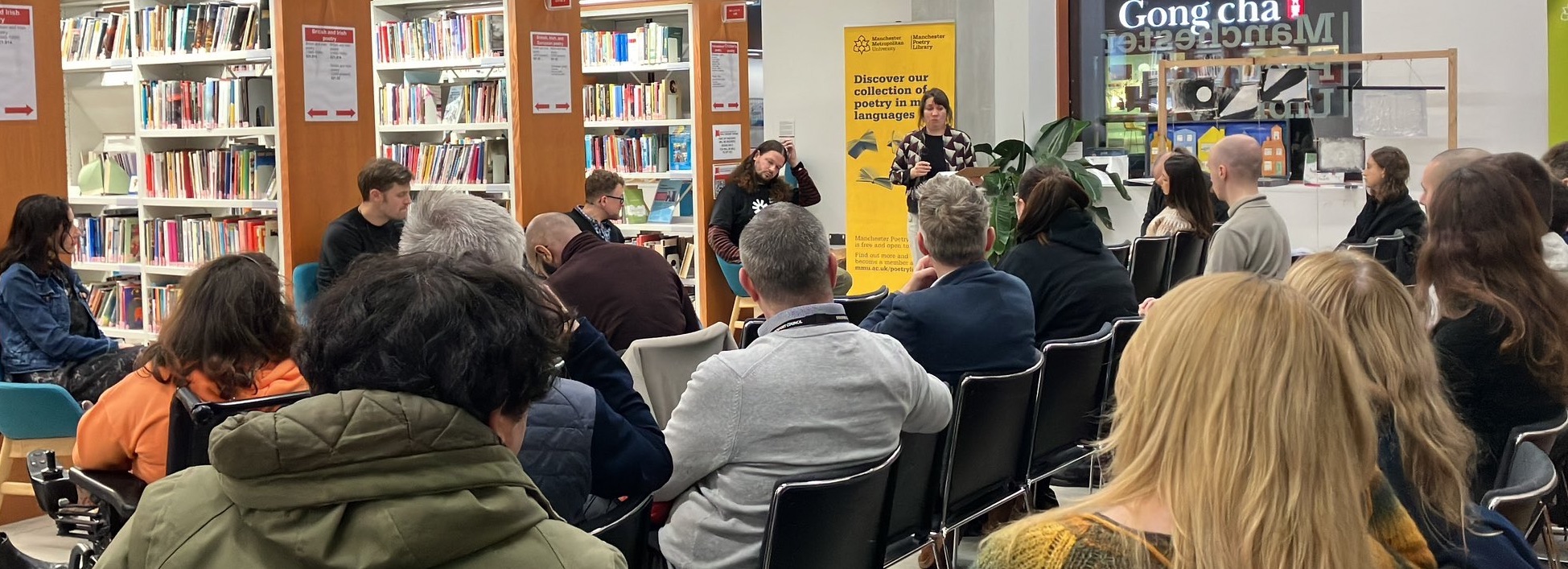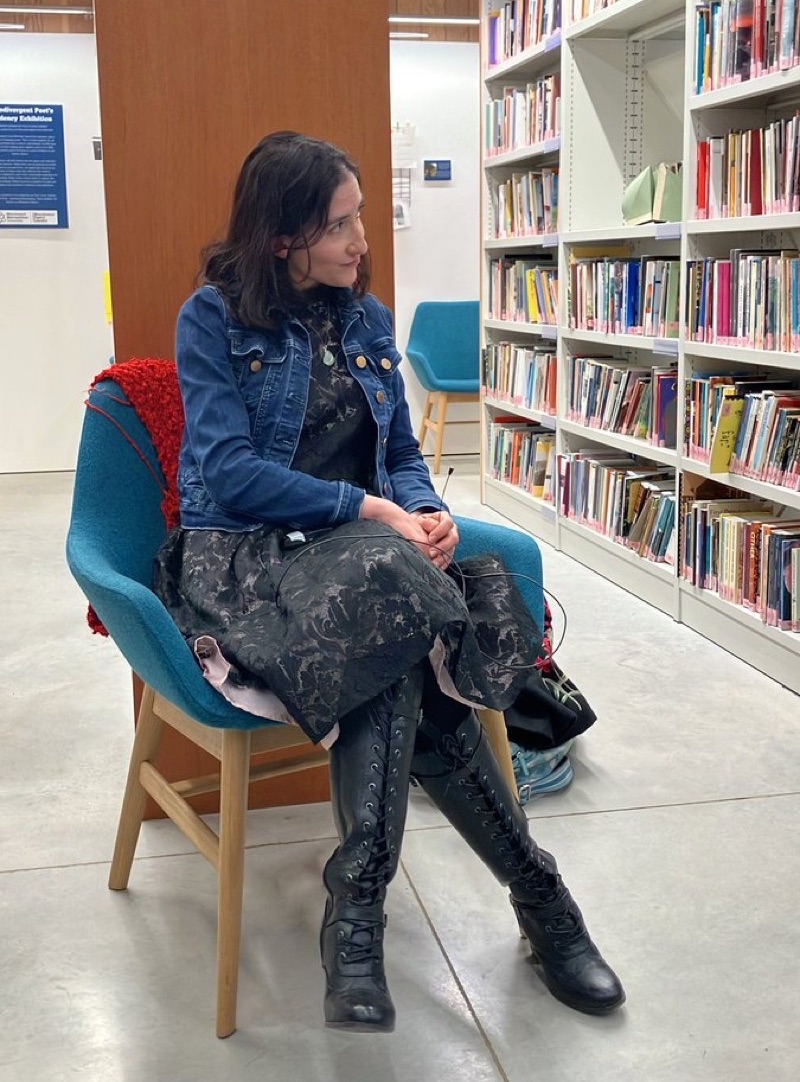On 6th December 2023 Mariana had the pleasure of being invited to join a panel organised by Suzie Cloves from Manchester Metropolitan University.

The event was presented by Manchester Centre for Public History and Heritage, in collaboration with Leverhulme Unit for the Design of Cities of the Future, and took place in the Manchester Poetry Library. The panel sought to discuss the central question of ‘How can we best use sound to support access to heritage?’ Access in this context was both about general access to audiences as well as access in connection to disability and accessibility. This was particularly exciting from the perspective of my work as although my research and practice on accessibility focuses on film and television, my other main strand of research is the study of acoustical heritage and historical soundscapes, including the use of sound installations in heritage sites. A bit more on this research strand can be found in a chapter I wrote for Professor Catherine Clarke’s edited collection The St. Thomas Way and the Medieval March of Wales: Exploring Place, Heritage, Pilgrimage.
It was an honour to be in a panel with experts from so many different exciting fields, including Luke Beesley (Researcher at University of Liverpool, Archive Lead at Greater Manchester Coalition of Disabled People); David Govier (Sound Archivist at Manchester Archives); Steve Graby (Access and Inclusion Worker at Disabled People’s Archive, Greater Manchester Coalition of Disabled People) and Olivia Hewkin (Museum, Galleries and Heritage Programme Manager at VocalEyes).
Our wonderful host Suzie Cloves started asking each of us to give an example of use of sound in heritage that we considered good practice. I focused on an experience I had in the Museum of Musical Instruments in Brussels, now quite a while ago. The museum used an audio guide that changed automatically from item to item depending on the proximity of the visitor to the object. This meant that there was no need to enter numbers on a device or to scan anything, one could just navigate through the space to the changing audio, which included information and music pertaining to the instrument in display. On some occasions it failed, but this was minor, and I remember it feeling quite seamless.
We were then also challenged to give an example of what we considered bad practice or occasions in which something failed to meet the standards expected. It was really interesting to hear everyone’s perspectives. Steve Graby mentioned the issues of multipurpose and open spaces within sites, in which events are held simultaneously and are competing for sonic space. For example, a concert being held at the same time as a talk, the former making it difficult for the latter to be enjoyed when there are sound spills throughout the venue and the acoustic design isn’t appropriate.
Another really great example was by Luke Beesley who focused on AD in the opera and how issues in the quality of the provision and a lack of consultation with visually impaired audiences led to an investment of energy on an experience that didn’t deliver what was needed by the audience. This great example opened up a key conversation on the need to embed accessibility into the plans for all heritage provision and the importance of considering co-creation as a methodology, something that Olivia Hewkin mentioned was often a shortcoming of organisations’ planning and a hurdle they encountered in their work.
I seized the opportunity to talk about my dislike of QR codes in heritage sites as an access strategy, critiquing the way some sites have held on to the view that because they invested in a technology they will continue to use it even if it doesn’t work. Mostly I discussed the issue of QR codes for visually impaired visitors and the need to think about how a visitor reaches from one QR code to the other and the need to make sure that sighted guidance is not required.
Obstacles to sound and heritage were also discussed and one item that came up was the need to make sure that people know that certain sound heritage, for example, in archives, actually exists. David Govier discussed this point further, reflecting on the difficulties institutions face in advertising their material and making it easily available.
From my side I expressed my disappointment at the reluctance of the sound heritage field in engaging in sound recreations and sonic reflections, beyond voice, for addressing painful and traumatic heritage, even when historical records suggest the crucial nature of sound in those experiences. The tendency of the field to sanitise some sound experiences could be considered problematic in its diminishing of the traumatic experiences connected to those spaces. More on this in my upcoming book…
A highlight of the event for me was how interactive it was, there was lots of audience participation and it was great to hear everyone’s favourite examples of sound access as well as those aspects that needed further work. The coming together of so many different perspectives provided a great richness to the whole event.
The podcast of the discussion is now available together with the transcript here.
Thank you very much to Suzie for organising such an insightful event and inviting me along. More about the programme for this event can be found here.
Mariana

